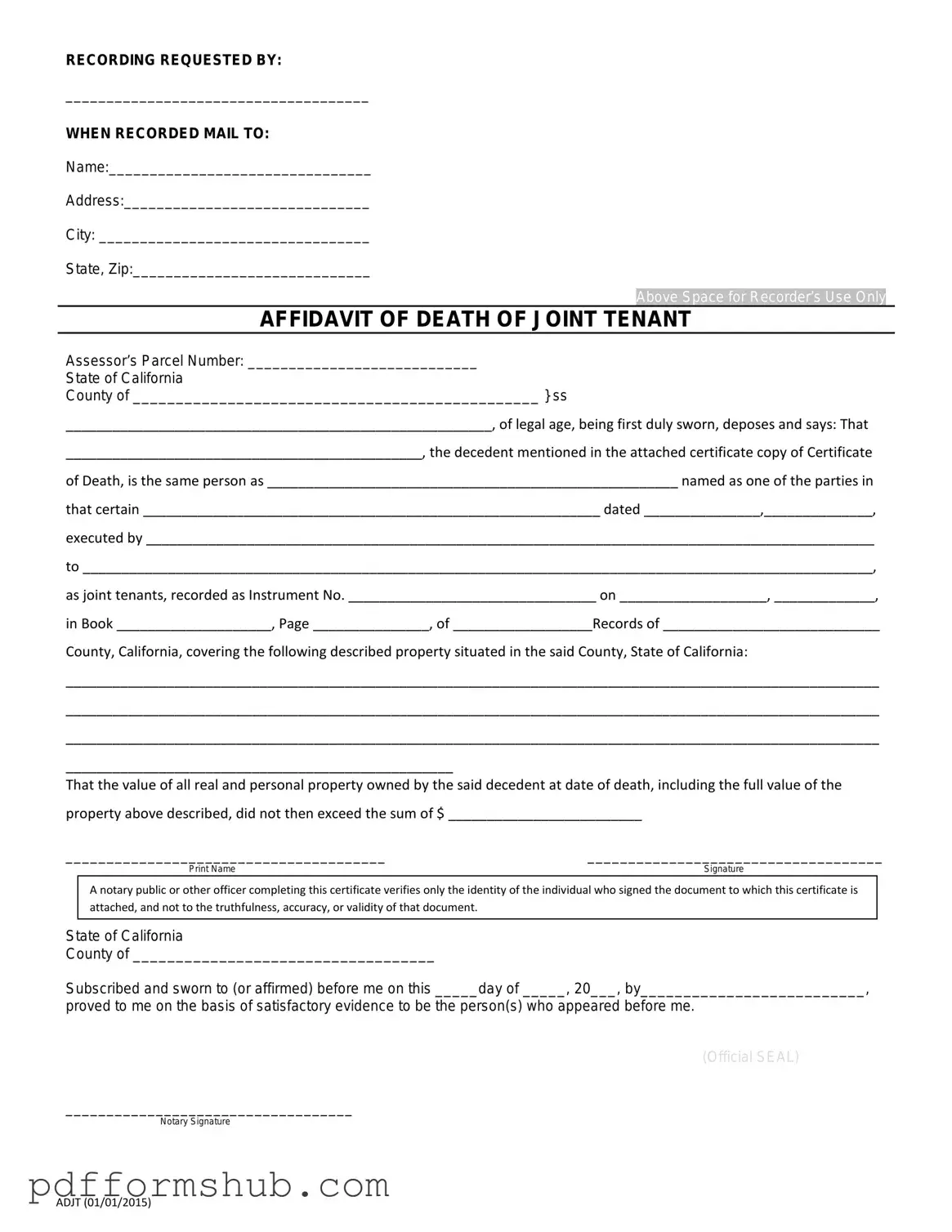Fill in Your California Death of a Joint Tenant Affidavit Form
The California Death of a Joint Tenant Affidavit form serves as an essential legal document that facilitates the transfer of property ownership when one joint tenant passes away. This affidavit helps clarify the status of the property and ensures that the remaining joint tenant can assert their rights without unnecessary complications. Understanding the importance of this form can simplify the process during a difficult time.
To fill out the form, click the button below.
Customize Form
